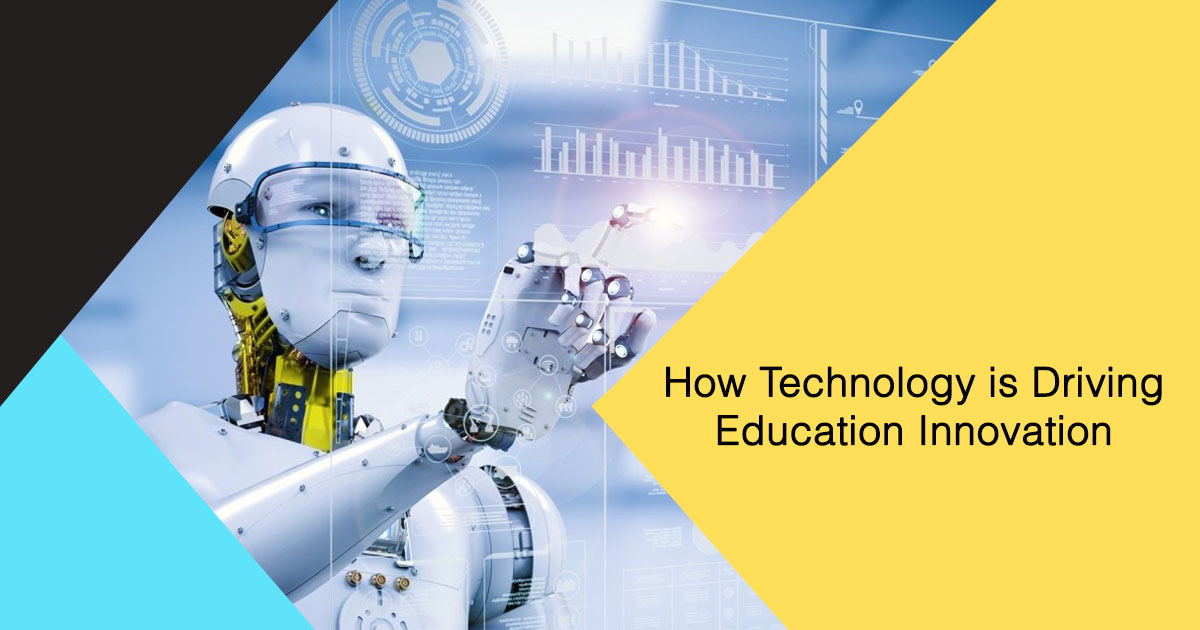How Technology is Driving Education Innovation

Technology is transforming education by making learning more personalized, accessible, engaging, and efficient. From online platforms to artificial intelligence, here’s how technology is driving educational innovation:
1. Personalized Learning and Adaptive Technologies
- Technology enables personalized learning experiences tailored to each student’s needs, pace, and interests. Adaptive learning platforms use AI to assess students’ strengths and weaknesses, adjusting content and assessments in real-time.
- Tools like Khan Academy and DreamBox offer adaptive math lessons that change based on student performance, allowing students to master skills before moving forward, resulting in more effective, individualized learning.
2. Online Learning Platforms and Virtual Classrooms
- Online learning platforms, such as Coursera, EdX, and Udacity, offer courses across a wide range of subjects, accessible from anywhere in the world. These platforms have made education more inclusive, offering students in remote areas and non-traditional learners access to high-quality education.
- Virtual classrooms also allow for real-time interaction between teachers and students through video conferencing tools like Zoom and Google Meet, which became essential during the COVID-19 pandemic and continue to be used for remote and hybrid learning models.
3. Gamification and Engaging Educational Content
- Gamification introduces elements of play into learning, motivating students through points, badges, and leaderboards. Tools like Classcraft and Kahoot turn lessons into games, encouraging participation and making learning more enjoyable.
- Digital storytelling and interactive quizzes help make complex concepts more engaging, allowing students to learn through immersive experiences. Game-based learning is particularly popular in subjects like math and language arts, where skills can be practiced in fun, interactive ways.
4. AI and Machine Learning for Enhanced Tutoring and Support
- AI-powered tutoring systems, such as Carnegie Learning’s Mathia and Squirrel AI, provide on-demand help and feedback, functioning as virtual tutors for students who need additional support outside of the classroom.
- Chatbots and AI assistants help answer common questions and provide resources for students 24/7, reducing the load on teachers and making support available whenever students need it.
5. Virtual Reality (VR) and Augmented Reality (AR) in the Classroom
- VR and AR technologies create immersive, experiential learning environments. VR can transport students to historical events, distant planets, or complex environments that are difficult to experience in real life, enhancing comprehension and retention.
- AR apps like Google Expeditions allow students to explore the human body, ancient monuments, or the solar system through interactive 3D models, making abstract concepts more tangible and memorable.
6. Learning Analytics for Data-Driven Decision-Making
- Learning analytics collect and analyze data on student performance, providing insights into learning progress, challenges, and areas for improvement. Teachers and administrators can use this data to identify struggling students and adjust teaching methods.
- Platforms like Brightspace and Canvas use learning analytics to track engagement, quiz scores, and assignment completion, helping educators make data-informed decisions to enhance curriculum and support student success.
7. Cloud Computing for Collaborative Learning and Resource Sharing
- Cloud-based tools like Google Workspace and Microsoft OneDrive allow students and teachers to collaborate on documents, share resources, and communicate in real-time. This fosters teamwork and group learning, even in remote or hybrid environments.
- Cloud storage also makes it easy to access and share large files, such as video lessons, presentations, and digital textbooks, eliminating the need for physical copies and making educational resources more readily available.
8. Flipped Classrooms and Blended Learning Models
- The flipped classroom model allows students to learn new content at home through videos and interactive modules, then practice and engage with the material in the classroom through discussion and hands-on activities.
- Blended learning combines online and in-person instruction, offering flexibility while maintaining teacher support. This model supports different learning styles and schedules, allowing students to learn in a way that works best for them.
9. Digital Assessments and Immediate Feedback
- Digital assessments, including online quizzes and tests, provide instant feedback to students, allowing them to understand their mistakes and learn from them in real-time. This immediate feedback helps reinforce learning and supports continuous improvement.
- Platforms like Edulastic and Socrative offer various types of assessments that can be automatically graded, saving teachers time and providing students with quick insights into their progress.
10. Coding and STEM Education with Robotics and Interactive Tools
- Technology-based STEM programs use interactive coding platforms, robotics kits, and IoT devices to teach students coding, engineering, and problem-solving skills. Coding tools like Scratch and Tynker introduce young students to programming concepts through drag-and-drop interfaces.
- Robotics platforms like LEGO Mindstorms and Sphero provide hands-on learning experiences, allowing students to see the real-world applications of STEM concepts and develop critical thinking skills.
11. Open Educational Resources (OER) and Digital Content Libraries
- Open educational resources (OER) are freely accessible, openly licensed educational materials. Teachers can access lesson plans, textbooks, and multimedia resources at little to no cost, making high-quality education more affordable and accessible.
- Sites like OER Commons and Khan Academy provide a wealth of resources for various subjects, enabling educators to customize and adapt content for their students.
12. Blockchain for Credentialing and Secure Academic Records
- Blockchain technology is being explored for securely storing and verifying academic credentials, making it easier for students to share verified certificates, transcripts, and achievements with employers or other institutions.
- Universities and online learning platforms are piloting blockchain systems to offer digital diplomas and badges that provide proof of skills and competencies, helping streamline the hiring process and ensuring the authenticity of academic records.
13. Assistive Technology for Inclusive Education
- Assistive technologies help make learning accessible to students with disabilities. Tools like text-to-speech, speech-to-text, screen readers, and closed captioning support students with visual, auditory, and learning impairments.
- Adaptive devices, such as specialized keyboards or touchscreens, allow students with physical disabilities to engage fully in digital learning environments, ensuring that all students have equal access to educational resources.
14. Social-Emotional Learning (SEL) Apps and Mental Health Tools
- SEL apps help students develop skills like empathy, resilience, and self-regulation, which are essential for personal development and academic success. Platforms like ClassDojo encourage positive behavior and social skills in younger students.
- Mental health apps, such as Headspace for Education, provide mindfulness exercises and resources to help students manage stress and anxiety, supporting their well-being and creating a healthier learning environment.
Challenges and Considerations
- Digital Divide: Access to technology is not universal, and the digital divide persists, especially in low-income communities. Schools must prioritize equitable access to devices and high-speed internet.
- Data Privacy and Security: With more student data being collected, schools need to ensure data privacy and protect against cybersecurity risks, adhering to laws like FERPA and COPPA.
- Teacher Training and Support: Implementing new technology requires training and ongoing support for educators to effectively use tools and integrate them into their curricula.
- Screen Time and Balance: Increased use of digital devices in education raises concerns about screen time, emphasizing the need to balance technology use with hands-on, interactive learning experiences.
Conclusion
Technology is reshaping education by making learning more accessible, personalized, and collaborative. From AI-driven tutoring and immersive VR experiences to cloud-based collaboration and digital assessments, these innovations empower students and teachers alike. As technology advances, it will continue to bridge educational gaps, support diverse learning needs, and prepare students for a digital future. Addressing challenges related to equity, privacy, and screen time will be essential to ensure that these innovations benefit all learners and enhance education in a sustainable, impactful way.










